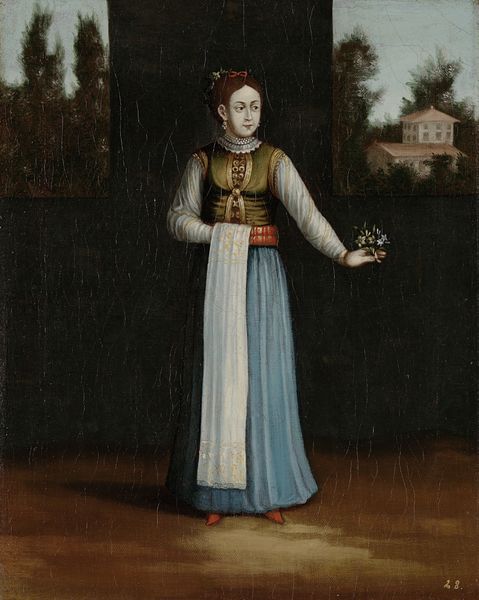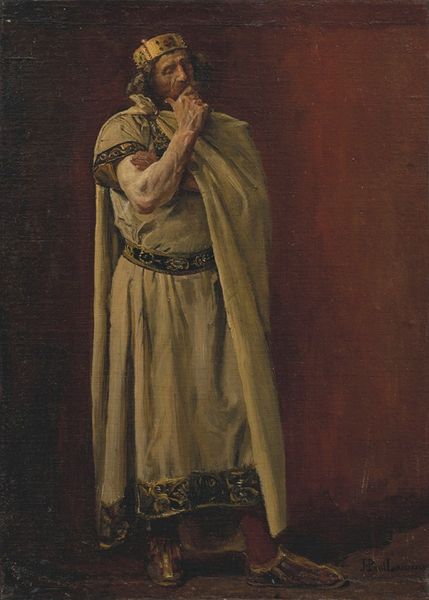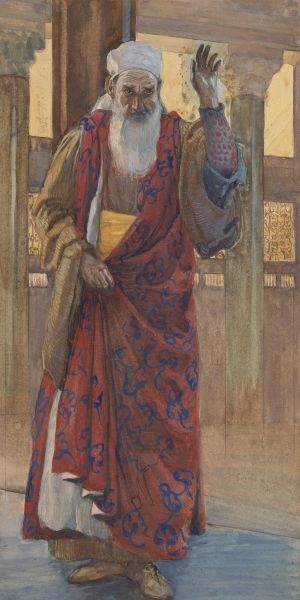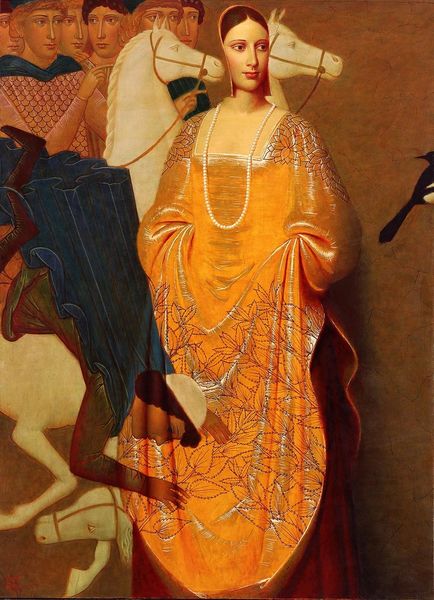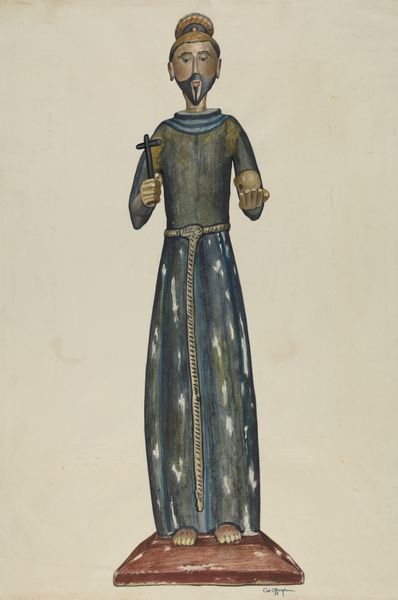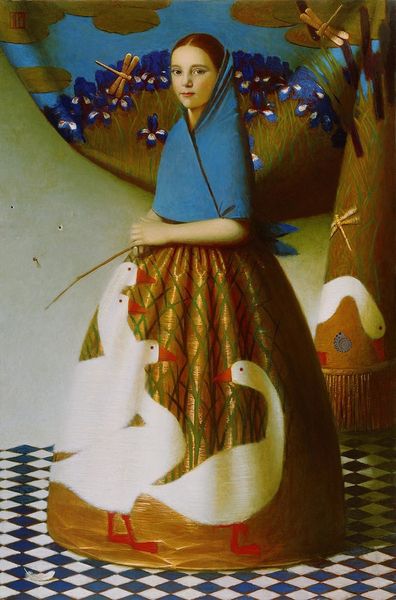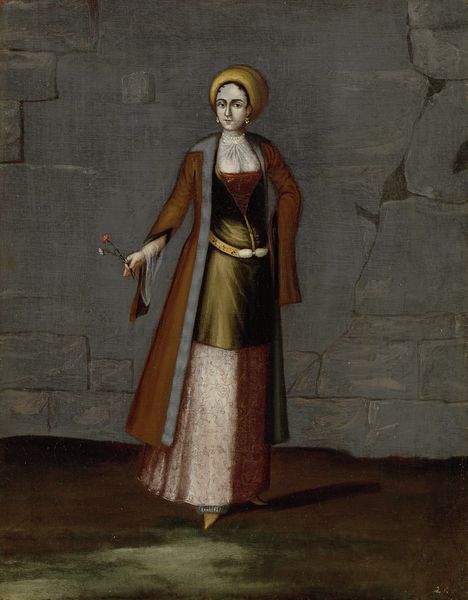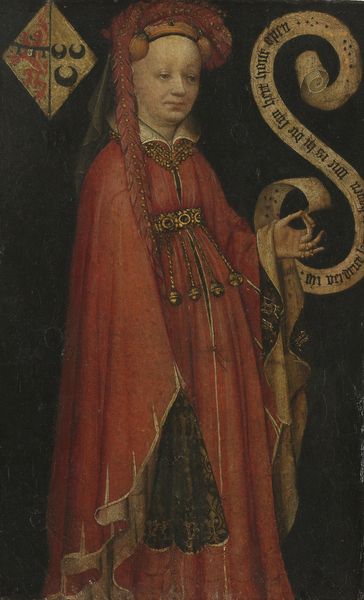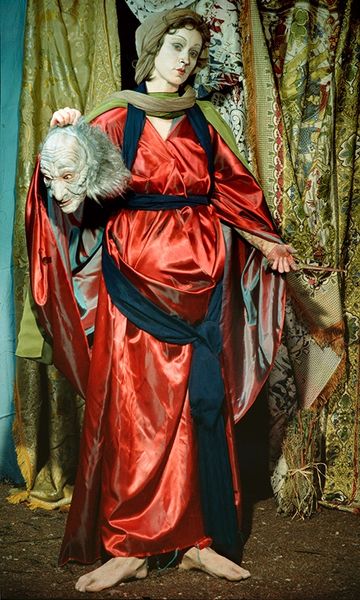
painting, oil-paint
#
portrait
#
baroque
#
painting
#
oil-paint
#
oil painting
#
orientalism
#
genre-painting
Dimensions: height 39.5 cm, width 31 cm
Copyright: Rijks Museum: Open Domain
Curator: What strikes me immediately about this piece is the evident use of oil paint. You can see the distinct texture, layering, and brushstrokes that suggest a slow, deliberate construction. It seems like a very material-focused work. Editor: Yes, "Woman from the Bulgarian Coast," created between 1700 and 1737 by Jean Baptiste Vanmour, is an interesting example of early 18th century Orientalism. There’s a certain staged quality about it; the way she is framed against a rather somber backdrop hints at a narrative designed for a Western European audience. Curator: I'm fascinated by the textures, specifically. Her gilded bodice, seemingly constructed from carefully linked metallic components, contrasts beautifully with the softness of the red fabric skirt and the deep indigo robe with playful bows. How were those individual golden disks crafted, I wonder? What do they represent in the hierarchy of materials available at the time? Editor: I suspect the very appeal lies in presenting an ‘exotic’ subject rendered in a manner easily consumable by European aristocratic circles. Consider Vanmour’s relationship to the Ottoman court; these weren't candid snapshots, but rather carefully constructed visual reports shaped by specific political and social dynamics. It's not simply a portrait, but a calculated representation reflecting Western perspectives of the "Orient." Curator: That gilded breastplate… it could symbolize status, wealth… maybe even allude to an Ottoman military influence. What dyes were used? How available would this textile and metal work have been for a model? There are clear ties to production techniques here worth exploring. Editor: Absolutely, but let's also think about its consumption. This piece probably hung in a private collection. How did this portrayal shape and reinforce perceptions of Bulgarians, of Ottoman territories? And who held the power in those interpretations? The role of genre painting during this period was hugely influential. Curator: I agree the portrayal is fascinating. But my focus keeps returning to the hands of artisans and available technologies. Where was the canvas sourced? Were the pigments locally manufactured or traded? Even within representations, it is the object as evidence of material culture that interests me. Editor: And for me, it's how those objects speak within larger conversations of cultural representation and geopolitical power plays of the time that remain fascinating. Thank you for lending insight into the process and raw components involved. Curator: Of course. Delving deeper into its creation reveals the labor and skill ingrained into it beyond its superficial presentation.
Comments
No comments
Be the first to comment and join the conversation on the ultimate creative platform.
